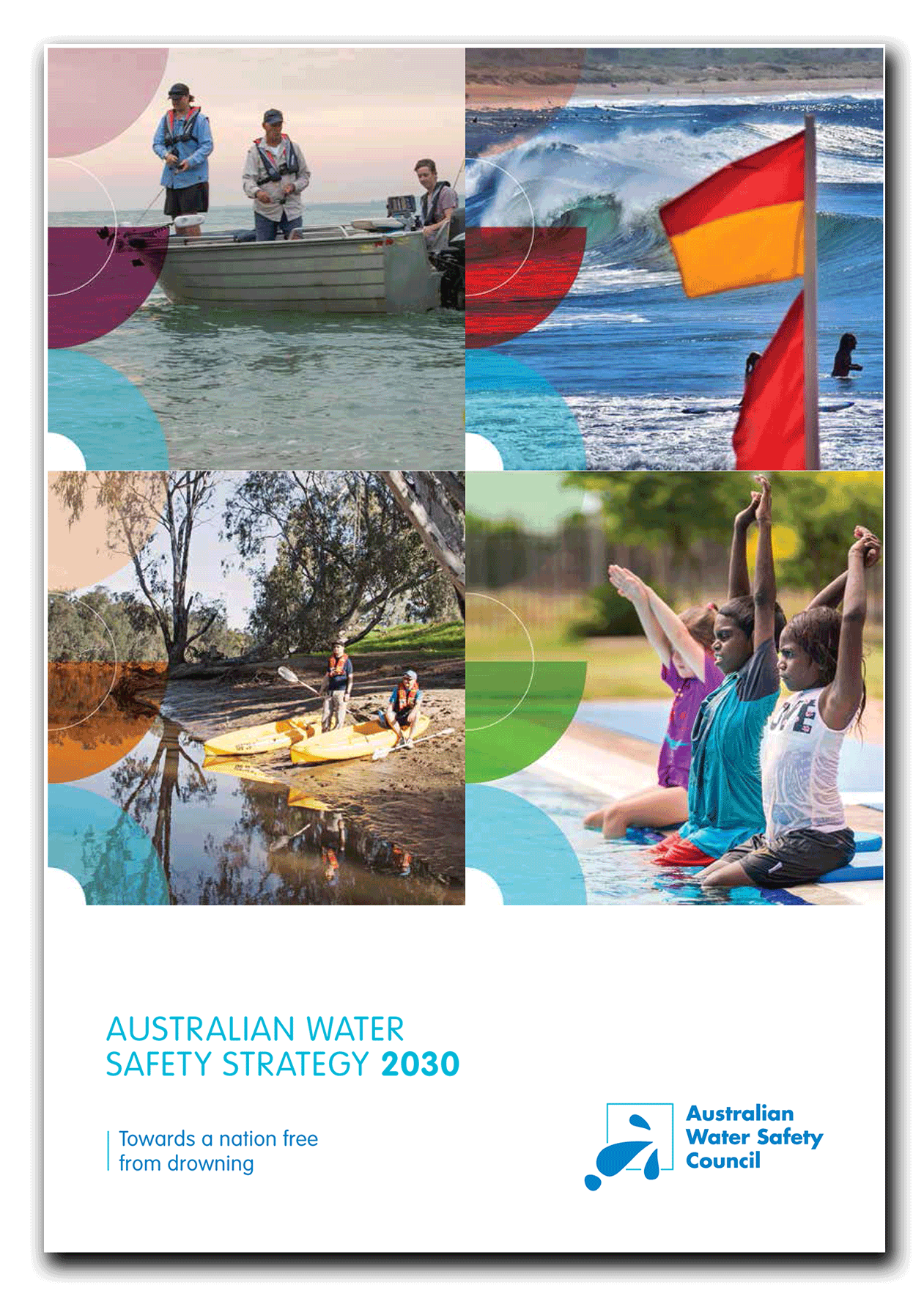Australian Water Safety Strategy 2030
 The New Water Safety Strategy by the Australian Water Safety Council has been launched and seeks to significantly cut the drowning rate in Australia.
The New Water Safety Strategy by the Australian Water Safety Council has been launched and seeks to significantly cut the drowning rate in Australia.
Downloads
Click here to download the Strategy
Click here to download media release
Each year more than 280 people die due to drowning, with many more admitted to hospital following a nonâ€fatal drowning incident. 41% of drowning occurs in coastal environments (beaches, ocean and rocks), 36% in rivers and lakes, and 61% outside of major cities. Males drown at a rate four times that of females and oneâ€yearâ€old toddlers record the highest drowning rate of any age.
The Australian Water Safety Strategy (AWSS) plays an essential role in National, State and Territory, and community approaches to preventing drowning and promoting safe use of the nation’s waterways and swimming pools. It outlines priority areas where Australia’s peak water safety bodies Royal Life Saving and Surf Life Saving, and AWSC Members can work together to prevent drowning on beaches, at rivers and lakes, and in swimming pools across Australia.
This new Australian Water Safety Strategy seeks to raise awareness about nonâ€fatal drowning incidents, encourage communities to create local water safety plans and promote access to swimming and water safety skills for all Australians, including refugees, migrants and those living in regional areas.
In addition to skills, the Australian Water Safety Strategy promotes the importance of frontline water safety services, including volunteer surf lifesavers, lifeguards, and swimming instructors. The Strategy encourages extension of services, as well as innovative approaches such as the use of drones and emergency stations in remote locations.
Key findings – Australian Water Safety Strategy 2030
- For every fatal drowning, there are three nonâ€fatal drowning incidents
- Males drown at a rate 4 times that of females
- Oneâ€yearâ€old toddlers record the highest drowning rate of any age
- Rivers and lakes account for 36% of drowning deaths
- Coastal environments (beaches, ocean and rock) account for 41% of drowning deaths
- 23% of drowning deaths occur while swimming and recreating
- 61% of drowning deaths occur outside of major cities
- Fatal drowning rate has reduced by 26% over the last ten years
- Child (0â€4 years) fatal drowning rate has reduced by 50% over the last ten years
To stay safe around water, the Australian Water Safety Council urge all Australians to:
- Supervise children at all times in, on and around water
- Learn swimming, water safety and lifesaving skills
- Wear a lifejacket when boating, rock fishing or paddling
- Swim at a patrolled beach between the red and yellow flags
- Avoid alcohol and drugs around water







